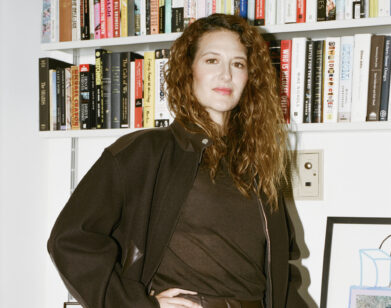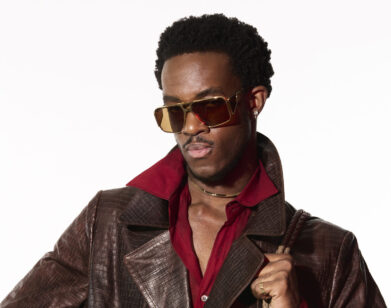The Women’s Designer
In the hands of another designer, mixing confident textures and prints might seem brash and discordant; in Italian designer Marco de Vincenzo’s Fall/Winter 2014 collection for his eponymous womenswear label, however, looks serenely transitioned through a cycle of recurring motifs. “My method is very impulsive,” de Vincenzo explains. “I find myself indulging in engaging imagery, listening to music, and spending hours in the weaver’s archive without committing myself to a specific theme,” he continues. “What I really look for is the harmony in all of the things in that moment that attract me, without examining why or how. The collection then begins to build organically from there.”
Opening with a dress of vertical, liquorice-like swirls in caramel, black, and gray, de Vincenzo’s fifth Fall collection moved into rainbow stripes, plaid, over-sized polka dots, and back again. Each look softly suggested what was to come: plaid dresses were lined with shiny, multi-colored, metallic stripes; polka dots were paired with plaid. The textures, ever integral to the designer’s work, were a clear evolution of the perforated and laser-cut leather and shiny, crocodile-like metallics of his Spring/Summer 2014 show. “Collections come one after the other with little to no interruption, and you find yourself thinking of Summer while creating a Winter collection,” he tells us. “With each new season and the further exploration into new materials and fabrics, I find that they become the central focus of every collection. This season I began with the reinterpretation of some classical pieces from a woman’s winter wardrobe: camel cashmere, tartans, shearling, and beaver fur.”
As a designer, de Vincenzo’s goal is a simple but worthy one: “There’s nothing more satisfying than witnessing the feeling in a woman’s eyes when she sees a collection she loves for the first time,” he notes. It is clearly working in his favor; yesterday, the day after de Vincenzo’s show, LVMH confirmed that they’d purchased a minority stake in the label.”I always hope that there is an emotional connection with the collections,” he adds.







